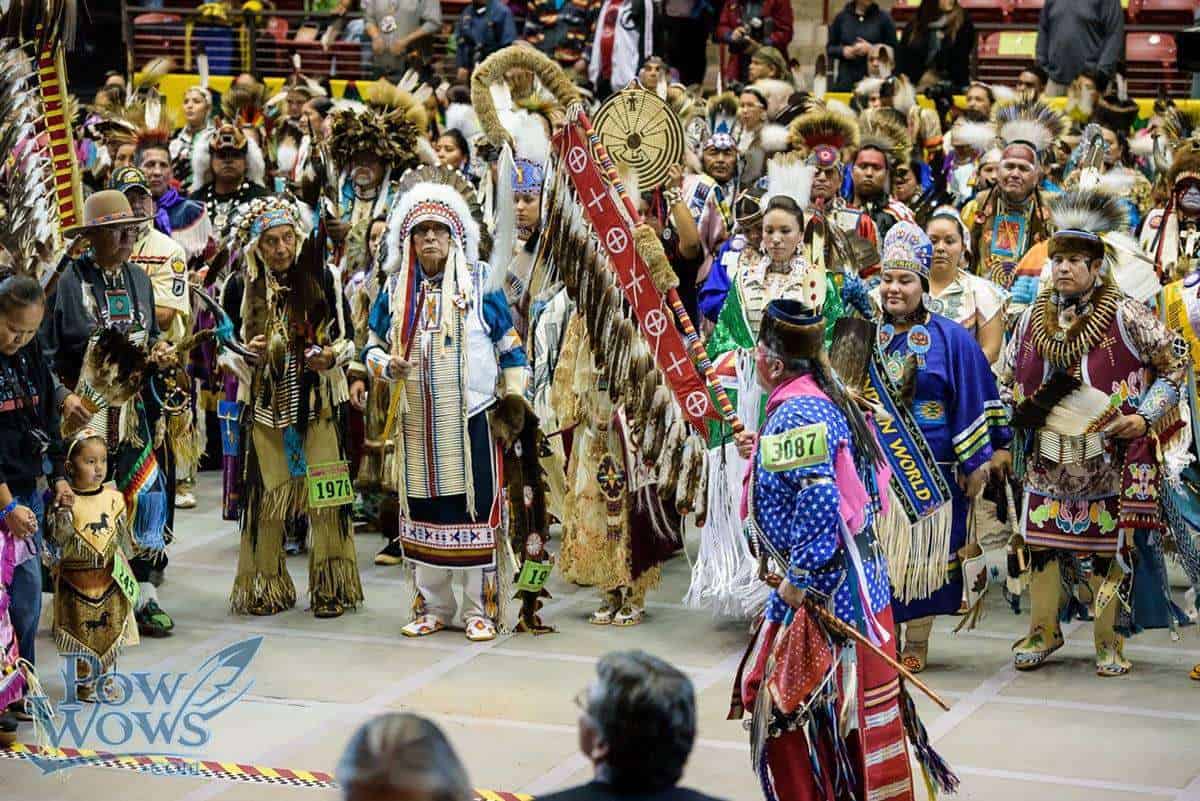

Though first met with opposition, the Fancy Shawl Dance is now the most popular contemporary dance for women and girls. Developed in the last thirty-five years, the physically challenging dance has helped redefine the role of female dancers at powwows. The Women’s Fancy Shawl Dance builds off traditional male dances. Twisting, jumping, and shaking, the regalia becomes a blur of color and texture. Their movements accentuate these adornments. Fancy Dancers wear circular, feathered bustles on their backs. The Men’s Fancy Dance is another modern form. Once subdued and stately, the men’s version has evolved to allow more self-expression in movement. The Men and Women’s Traditional Dance follows a two-beat pattern. Today there are dances for elders, men, women, teenagers, and children. Originally, only warriors danced at powwows.

The diversity of powwow dances reflects the evolution of the tradition. There are distinct styles of singing in the northern and southern traditions. Groups of eight or more musicians sit at a powwow drum, drumming in unison and singing along. Powwow songs are not usually lyrical, but instead consist of a series of non-lexical vocables.

In some tribes, women who are Northern style singers are allowed to sit beside the men and beat the drum. Each tribe has a unique repository of songs that have been passed down orally for generations. At a powwow, the reverberations of the drum call out to the spirits and bring dancers, singers, and spectators into a shared rhythm.ĭrumming is a ubiquitous feature of powwows, but specific drumming traditions vary from place to place. The drumbeat is “the heartbeat of Mother Earth,” according to Indigenous Institute of the Americas president Gregory Gomez. Photo courtesy of the National Museum of the American Indian, Smithsonian Institution Drumming


 0 kommentar(er)
0 kommentar(er)
